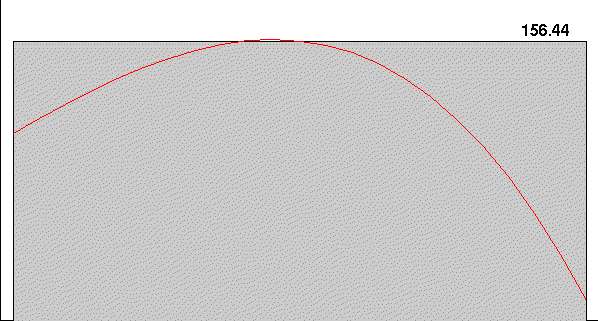



同构基本定理
历史
同构基本定理最早由埃米·诺特(Emmy Noether)在她于1927在德国数学期刊 数学分析 (Mathematische Annalen)发表的论文 Abstrakter Aufbau der Idealtheorie in algebraischen Zahl- und Funktionenkörpern 中明确阐述。
群同态基本定理
我们首先叙述群论中的同态基本定理,他们的形式相对简单,却表达了商群的重要性质。定理的叙述中用到了关于正规子群的等价类概念。
群同构基本定理
群同构第一定理
给定一个群同态 f : G → → --> G ′ {\displaystyle f:G\to G"} ,根据群同态第一基本定理,我们可以把 G {\displaystyle G} 除以 G {\displaystyle G} 的核,使 f {\displaystyle f} 变成单射。
直观来讲,把一个群 G {\displaystyle G} 除以 G {\displaystyle G} 的子群 H {\displaystyle H} 相当于把 H {\displaystyle H} 里的元素看成0。把 f {\displaystyle f} 的核除掉后,我们使得 f ( x ) = 0 {\displaystyle f(x)=0} 只在 x = 0 {\displaystyle x=0} 时才会成立,这是 f {\displaystyle f} 的单射性的等价叙述。
我们必须先确定商群具有群的结构,才可以对 G / Ker --> f → → --> G ′ {\displaystyle G/\operatorname {Ker} f\to G"} 进行讨论。
定理: 给定 G {\displaystyle G} 和 G ′ {\displaystyle G"} 两个群,和 f : G → → --> G ′ {\displaystyle f:G\rightarrow G"} 群同态。则 Ker --> f {\displaystyle \operatorname {Ker} f} 是一个 G {\displaystyle G} 的正规子群。
证明: 记 ⋅ ⋅ --> {\displaystyle \cdot } 为 G {\displaystyle G} 和 G ′ {\displaystyle G"} 的运算符号,记 e {\displaystyle e} 和 e ′ {\displaystyle e"} 他们的单位元,我们可以验证 Ker --> f {\displaystyle \operatorname {Ker} f} 在共轭运算下封闭,即对于所有 x ∈ ∈ --> G {\displaystyle x\in G} 、所有 h ∈ ∈ --> Ker --> f {\displaystyle h\in \operatorname {Ker} f} ,有 x ⋅ ⋅ --> h ⋅ ⋅ --> x − − --> 1 ∈ ∈ --> Ker --> f {\displaystyle x\cdot h\cdot x^{-1}\in \operatorname {Ker} f} 。
我们有 f ( x ⋅ ⋅ --> h ⋅ ⋅ --> x − − --> 1 ) = f ( x ) ⋅ ⋅ --> f ( h ) ⋅ ⋅ --> f ( x − − --> 1 ) {\displaystyle f(x\cdot h\cdot x^{-1})=f(x)\cdot f(h)\cdot f(x^{-1})} 。由于 h {\displaystyle h} 在 Ker --> f {\displaystyle \operatorname {Ker} f} 里面,即 f ( h ) = e ′ {\displaystyle f(h)=e"} ,我们推论 f ( x ⋅ ⋅ --> h ⋅ ⋅ --> x − − --> 1 ) = f ( x ) ⋅ ⋅ --> f ( x − − --> 1 ) = f ( x ⋅ ⋅ --> x − − --> 1 ) = f ( e ) = e ′ {\displaystyle f(x\cdot h\cdot x^{-1})=f(x)\cdot f(x^{-1})=f(x\cdot x^{-1})=f(e)=e"} 。因此, x ⋅ ⋅ --> h ⋅ ⋅ --> x − − --> 1 {\displaystyle x\cdot h\cdot x^{-1}} 在 Ker --> f {\displaystyle \operatorname {Ker} f} 里面,故 Ker --> f {\displaystyle \operatorname {Ker} f} 是 G {\displaystyle G} 的正规子群。
Ker --> f {\displaystyle \operatorname {Ker} f} 是 G {\displaystyle G} 的正规子群的这个性质让我们可以在商群 G / Ker --> f {\displaystyle G/\operatorname {Ker} f} 上定义一个与 G {\displaystyle G} 的运算规则相容的运算规则。因为相容性的缘故,群同态 f : G → → --> G ′ {\displaystyle f:G\rightarrow G"} 诱导出群同构 f ^ ^ --> : G / Ker --> f → → --> Im --> f {\displaystyle {\widehat {f}}:G/\operatorname {Ker} f\rightarrow \operatorname {Im} f} 。
我们有以下的定理:
群同构第一定理 给定 G {\displaystyle G} 和 G ′ {\displaystyle G"} 两个群, f : G → → --> G ′ {\displaystyle f:G\rightarrow G"} 群同态,则 f {\displaystyle f} 诱导出一个从 G / Ker --> f {\displaystyle G/\operatorname {Ker} f} 打到 f ( G ) {\displaystyle f(G)} 的群同构。
证明: 记 H {\displaystyle H} 为 f {\displaystyle f} 的核。我们定义 f ^ ^ --> {\displaystyle {\hat {f}}} 为 f ^ ^ --> ( x H ) = f ( x ) {\displaystyle {\widehat {f}}(xH)=f(x)} .
函数 f ^ ^ --> {\displaystyle {\widehat {f}}定义良好义良好,即 f ^ ^ --> ( x H ) {\displaystyle {\widehat {f}}(xH)} 只依赖于 x H {\displaystyle xH} 而与代表 x {\displaystyle x} 的选择无关。理由是,若 y ∈ ∈ --> G {\displaystyle y\in G} 是 x H {\displaystyle xH} 的一个代表,即若 x H = y H {\displaystyle xH=yH} ,则 x y − − --> 1 ∈ ∈ --> H = Ker --> f {\displaystyle xy^{-1}\in H=\operatorname {Ker} f} ,所以 f ( x ) = f ( y ) {\displaystyle f(x)=f(y)} ,从而 f ^ ^ --> ( x H ) = f ^ ^ --> ( y H ) {\displaystyle {\widehat {f}}(xH)={\widehat {f}}(yH)} 。
由商群运算的定义, f ^ ^ --> {\displaystyle {\widehat {f}}} 是一个群同态。
群同态 f ^ ^ --> {\displaystyle {\widehat {f}}} 满射:对于所有 y ∈ ∈ --> f ( G ) {\displaystyle y\in f(G)} ,存在 x ∈ ∈ --> G {\displaystyle x\in G} 使得 f ( x ) = y {\displaystyle f(x)=y} ,由此 f ^ ^ --> ( x H ) = f ( x ) = y {\displaystyle {\widehat {f}}(xH)=f(x)=y} 。
群同态 f ^ ^ --> {\displaystyle {\widehat {f}}} 单射。理由是:考虑 f ^ ^ --> {\displaystyle {\widehat {f}}} 的核里的任意元素 x H {\displaystyle xH} ,则 e ′ = f ^ ^ --> ( x H ) = f ( x ) {\displaystyle e"={\widehat {f}}(xH)=f(x)} ,即 x {\displaystyle x} 在 f {\displaystyle f} 的核 H {\displaystyle H} 里面。又 x H = H {\displaystyle xH=H} 是 G / H {\displaystyle G/H} 的单位元。
这个定理也可以想成是一个单射与一个满射的复合,以下为示意图

交换图
群同构第二定理
群同构第二定理: 给定群 G {\displaystyle G} 、其正规子群 N {\displaystyle N} 、其子群 H {\displaystyle H} ,则 N ∩ ∩ --> H {\displaystyle N\cap H} 是 H {\displaystyle H} 的正规子群,且我们有群同构如下: H / ( H ∩ ∩ --> N ) ≃ ≃ --> H N / N {\displaystyle H/(H\cap N)\simeq HN/N}
证明:
必须先证明 H N {\displaystyle HN} 是一个正规子群、 H {\displaystyle H} 是一个子群才能讨论商群 H N / N {\displaystyle HN/N} 。
设 h n {\displaystyle hn} 和 h ′ n ′ {\displaystyle h"n"} 为 H N {\displaystyle HN} 中的两个元素。我们有 h n h ′ n ′ = h h ′ ( h ′ − − --> 1 n h ′ ) n ′ {\displaystyle hnh"n"=hh"(h"^{-1}nh")n"} ,其中 h h ′ ∈ ∈ --> H {\displaystyle hh"\in H} , h ′ − − --> 1 n h ′ ∈ ∈ --> N {\displaystyle h"^{-1}nh"\in N} (因为 N {\displaystyle N} 在 G {\displaystyle G} 中正规) 且 n ′ ∈ ∈ --> N {\displaystyle n"\in N} ,故 h n h ′ n ′ {\displaystyle hnh"n"} 在 H N {\displaystyle HN} 中,其证明了 H N {\displaystyle HN} 在乘法下封闭。不难证明他不是空集合、以及逆元的封闭性。
此外,我们有 N ⊂ ⊂ --> H N ⊂ ⊂ --> G {\displaystyle N\subset HN\subset G} 的包含关系,并且 N {\displaystyle N} 在 G {\displaystyle G} 中正规,所以也在 H N {\displaystyle HN} 中正规。
为了建构群同构,我们将使用群同构第一定理。
取 j : H ↪ ↪ --> H N {\displaystyle j:H\hookrightarrow HN} 单射群同态,定义为 j ( h ) = h {\displaystyle j(h)=h} ,取标准满射 σ σ --> : H N ↠ ↠ --> H N / N {\displaystyle \sigma :HN\twoheadrightarrow HN/N} (值域是个群,因为 N {\displaystyle N} 在 G {\displaystyle G} 中正规)。借由复合两个群同态,我们建构出一个新的群同态 f = σ σ --> ∘ ∘ --> j : H → → --> H N / N {\displaystyle f=\sigma \circ j:H\to HN/N} 定义为 f ( h ) = h N {\displaystyle f(h)=hN} 。
群同态 f {\displaystyle f} 是满射。
理由是,设 ( h n ) N ∈ ∈ --> H N / N {\displaystyle (hn)N\in HN/N} ,其中 h ∈ ∈ --> H {\displaystyle h\in H} 且 n ∈ ∈ --> N {\displaystyle n\in N} 。由于 n {\displaystyle n} 在 N {\displaystyle N} 里面, h n N = h N {\displaystyle hnN=hN} ,故 h n N = f ( h ) {\displaystyle hnN=f(h)} 。
f {\displaystyle f} 的核是 H ∩ ∩ --> N {\displaystyle H\cap N} 。
理由是, f ( h ) = h N {\displaystyle f(h)=hN} 是 H N / N {\displaystyle HN/N} 的单位元,即 N {\displaystyle N} 当且仅当, h {\displaystyle h} 在 N {\displaystyle N} 里面。由于 h {\displaystyle h} 已经在 H {\displaystyle H} 里面,所以证明这个相当于证明 h {\displaystyle h} 在 N ∩ ∩ --> H {\displaystyle N\cap H} 里面。
由群同构第一定理知 N ∩ ∩ --> H {\displaystyle N\cap H} 是 H {\displaystyle H} 的正规子群,且其诱导出的映射 f ^ ^ --> : H / ( N ∩ ∩ --> H ) → → --> H N / N {\displaystyle {\widehat {f}}:H/(N\cap H)\to HN/N} 是群同构。
如果我们弱化前提,假设 N {\displaystyle N} 的正规化子包含 H {\displaystyle H} (把相等改成包含)这个定理依然正确。
群同构第三定理
群同构第三定理: 给定群 G {\displaystyle G} , N {\displaystyle N} 和 M {\displaystyle M} 为 G {\displaystyle G} 的正规子群,满足 M {\displaystyle M} 包含于 N {\displaystyle N} ,则 N / M {\displaystyle N/M} 是 G / M {\displaystyle G/M} 的正规子群,且有如下的群同构: ( G / M ) / ( N / M ) ≃ ≃ --> G / N . {\displaystyle (G/M)/(N/M)\simeq G/N.}
证明: G / M → → --> G / N , g M ↦ ↦ --> ( g M ) N = g ( M N ) = g N {\displaystyle G/M\to G/N,~gM\mapsto (gM)N=g(MN)=gN} 为满射,其核为 N / M {\displaystyle N/M}
环和模上的形式
将定理中的“群”换为“ R -模”,将“正规子群”换为“子模”,就得到对于确定的环 R 上的模的同构基本定理,(因此同构基本定理对于确定的域上的向量空间也成立)对于向量空间,同构第一基本定理即是秩-零化度定理。
将定理中的“群”换为“环”,“子群”换为“子环”,“正规子群”换为“理想”,“商群”换为“商环”就得到环的同构基本定理。
与子群的乘积 HK 相对应的定义是子模,子环,子空间的并,用 H + K 而不再用 HK 表示。具体的定义是:
推广
在泛代数中,正规子群被推广为更广泛的共轭类的概念。
第一同构定理
设 A 和 B 是两个代数结构, f 是 A 到 B 的态射,则 A 等价关系 Φ Φ --> {\displaystyle \Phi } : a~b 当且仅当 f(a)=f(b) 是 A 上的一个同余类,并且 A/ Φ Φ --> {\displaystyle \Phi } 同构于 f 的像( B 的子代数)。
第二同构定理
设 B 是 A 的子代数, Φ Φ --> {\displaystyle \Phi } 是 A 上的同余类。令[B] Φ Φ --> {\displaystyle \Phi } 是所有包含 B 种元素的同余类的集合,它是 A/ Φ Φ --> {\displaystyle \Phi } 的一个子集; Φ Φ --> B {\displaystyle \Phi _{B}} 是 Φ Φ --> {\displaystyle \Phi } 限制在 B × B 上的部分。那么[B] Φ Φ --> {\displaystyle \Phi } 是 A/ Φ Φ --> {\displaystyle \Phi } 的子代数结构, Φ Φ --> B {\displaystyle \Phi _{B}} 是 B 上的同余类,并且[B] Φ Φ --> {\displaystyle \Phi } 同构于 B/ Φ Φ --> B {\displaystyle \Phi _{B}} 。
第三同构定理
设 A 是一个代数结构, Φ Φ --> {\displaystyle \Phi } 和 Ψ Ψ --> {\displaystyle \Psi } 是 A 上的两个同余关系, Ψ Ψ --> {\displaystyle \Psi } 包含于 Φ Φ --> {\displaystyle \Phi } 。则 Φ Φ --> {\displaystyle \Phi } 定义了 A/ Ψ Ψ --> {\displaystyle \Psi } 上的一个同余类 Θ Θ --> {\displaystyle \Theta } : [a]~[b] 当且仅当 a 与 b 关于 Φ Φ --> {\displaystyle \Phi } 同余( [a] 表示 a 所在的 Ψ Ψ --> {\displaystyle \Psi } -等价类),并且 A/ Φ Φ --> {\displaystyle \Phi } 同构于 (A/ Ψ Ψ --> {\displaystyle \Psi } )/ Θ Θ --> {\displaystyle \Theta } 。
免责声明:以上内容版权归原作者所有,如有侵犯您的原创版权请告知,我们将尽快删除相关内容。感谢每一位辛勤著写的作者,感谢每一位的分享。

- 有价值
- 一般般
- 没价值








推荐阅读

关于我们

APP下载


















